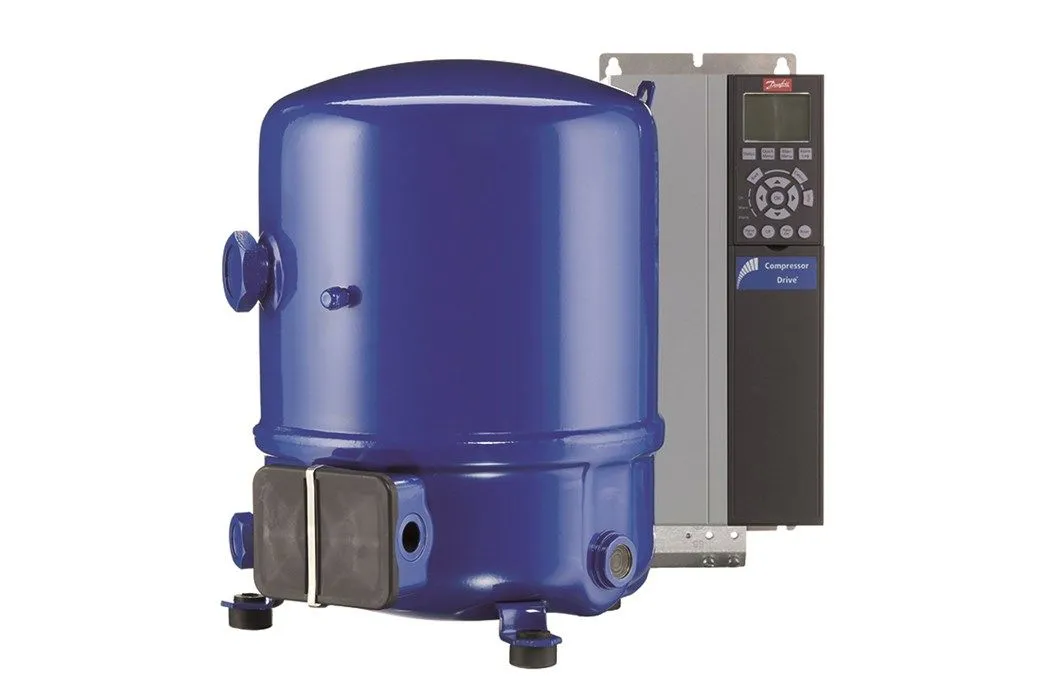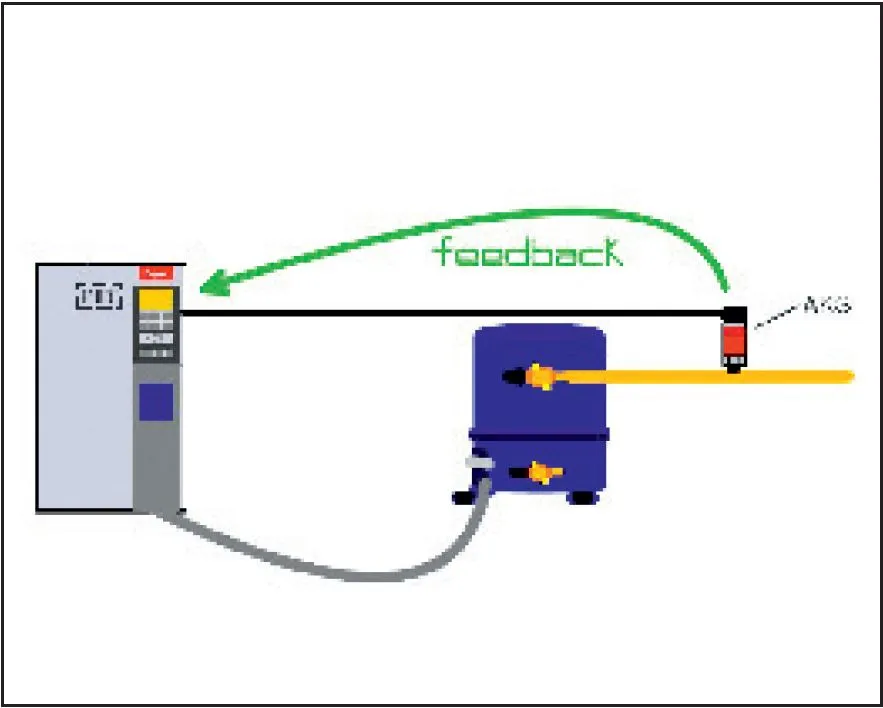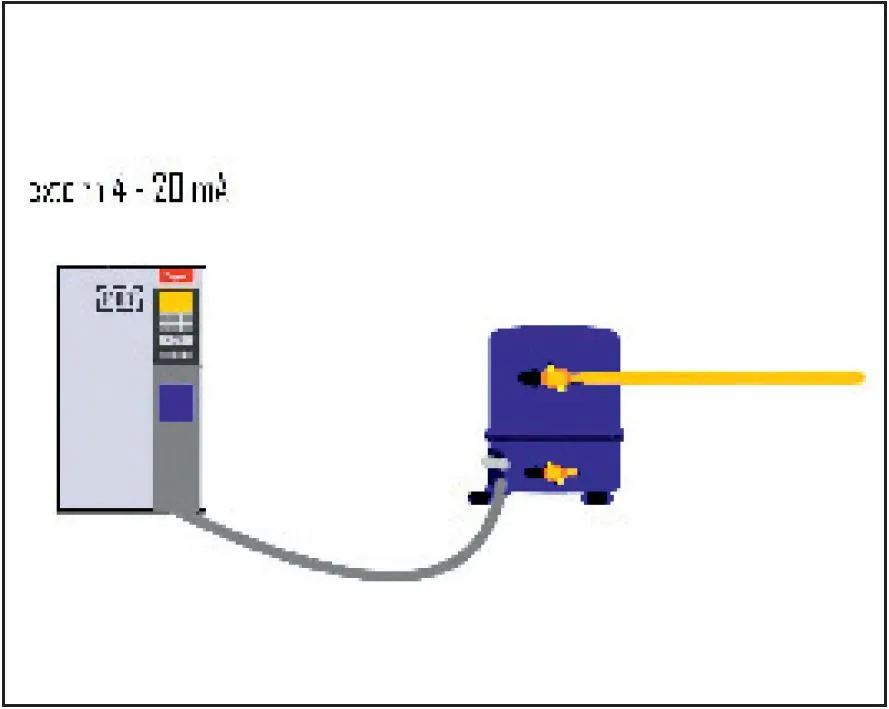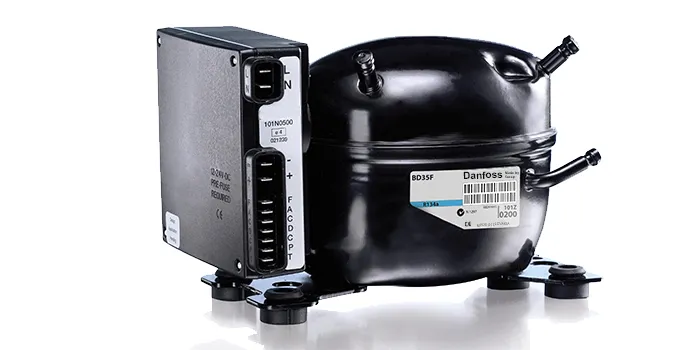Infinitely variable compressor capacity control
Infinitely variable compressor capacity control

Infinitely variable speed control using a combination of compressor and frequency converter is the trend. In order to obtain an efficient system, it has been shown that the compressor must be specially adapted to speed control. This is not surprising, since there are special challenges in terms of oil management, electrical and mechanical stresses. But the frequency converter should also be matched to the refrigerant compressor. For example, starting a compressor under back pressure is a difficult task for a standard frequency converter, since full motor torque is required immediately. This requirement differs from standard frequency converter applications such as pump or fan speed control.
Optimal partial load capacity
Compressors in refrigeration technology are normally only designed for the maximum system load. In fact, however, the systems run at part load for 65% of their operating time, so that the compressor is oversized for long periods of time. Conventional controls that compensate for this excess compressor output are on/off controls, pressure-controlled output controllers or hot-gas bypass controllers. Compared to these methods, a compressor frequency converter package offers superior control performance and is the more energy-efficient solution. The cooling capacity of a conventional hermetic reciprocating compressor is constant, the motor and crankshaft rotate at 2900 revolutions per minute (50 Hz, one pole pair). With a "VTZ Compressor Drive", on the other hand, the speed can be varied in a frequency range from 30 to 90 Hz. Depending on the necessary cooling load, this results in an engine speed of between 1800 and 5400 rpm. Therefore, the compressor is always correctly dimensioned with regard to the cooling requirement. The “VTZ” thus offers the same minimum partial load as a 3-compressor combination. However, the control gradation is not 33, 66 and 100%, but stepless.

Reduced starting currents
built soft starter, which significantly reduces the current peak during the compressor start compared to the direct start. The frequency converter starts with a very low frequency when the compressor starts and adapts it to the actual rotational speed of the rotor. In the case of a direct start of a compressor, on the other hand, 50 Hz is applied directly, even if the rotor has not yet started moving at all. This leads to starting current peaks that do not occur in this form in frequency converter operation. No extra motor protection switch is required to monitor the operating currents and the symmetrical current consumption. This monitoring function is also performed by the "Type CD" (Compressor Drive) frequency converter. A load contactor for the compressor is also superfluous due to the "CD".
Special frequency converter and compressor
It is not possible to control a one- or two-cylinder compressor for every frequency converter, as different torques occur when the crankshaft rotates 360°. This phenomenon only shows up with compressor control, not with pump or fan speed control, for example, and can therefore lead to malfunctions of an unsuitable frequency converter. In addition, an incorrect parameterization of the acceleration ramp for the operating frequency could result in a compressor failure after a very short time. In particular, ramps that are set too long can have devastating consequences for the build-up of lubrication in the compressor. The correct ramp is around 0.6 seconds. In order not to burden the commissioning technician with these details, the "CD" frequency converter is designed for operation with one and two-cylinder compressors, as well as pre-adjusted to the correct ramp. The "VTZ" size can be selected directly via the "CD" settings menu. The converter thus automatically knows how many cylinders the compressor has and it also knows the correct ramp. The "VTZ-CD" package offers a "VTZ" compressor specially designed for speed control, which harmonizes perfectly with the "CD" frequency converter, which has been optimized for refrigeration technology.
cabling
When using a frequency converter, a number of things must be observed, particularly with regard to cable routing and shielding.

The motor cable (from the converter to the compressor) must always be routed separately from the control and bus cables and even from the mains cable. In addition, the motor cable in particular should be kept as short as possible. If this is not observed, EMC problems will quickly arise, which manifest themselves, for example, in the infl uence of control electronics and bus lines. A shielded sheathed cable must be used as the motor cable, the shield of which must be connected on both sides – i.e. both on the frequency converter and on the compressor. Specifically, the sheathed cable should be stripped all around and a metal clamp should be used for shielding. The motor cable must be laid at a minimum distance of 200 mm from the control or bus lines and the mains cable. Also, the power cord must not be routed directly together with the non-load cords. Particular care should also be taken with the motor cable if this is to be de-energized. Due to the fact that the power electronics of a frequency converter contains high-performance capacitors, dangerous voltages can still occur in the motor cable for a certain time after the mains has been switched off.
Regulation by means of a pressure sensor
Together with a pressure sensor, the package works in a similar way to a compound controller.

The frequency converter receives a pressure setpoint that it tries to keep constant. If the pressure value increases, the compressor speed is increased. If the actual pressure value falls, the speed is reduced. With this control, a very constant suction pressure can be achieved. Pressure transducers with standard signals of 4 to 20 mA (current signal) or 0 to 10 V (voltage signal) can be used, as well as special versions with voltage signals of 1 to 5 V. For converting a factory-set pressure transducer with voltage signal to current signal there is a DIP switch on the frequency converter.

Setpoint from an external controller
If a target value for the speed of the compressor is already supplied via an external controller, the "CD" can also be operated with it. With this variant, the pressure transmitter is omitted. It is replaced by the input signal from the external controller. A standard voltage signal of 0 to 10 V or a 4 to 20 mA current signal can also be used here. This control can be a PLC (programmable logic controller) or a compound controller with an output for a speed-controlled compressor. In terms of control technology, operation with a compound controller can produce very elegant control results. For example, a group of three with two direct start compressors and a "VTZ-CD" would initially start with the "VTZ" at low output. When the "VTZ" is running at full speed, the compound controller switches on another compressor and drives the "VTZ" back down to a minimum speed of 30 Hz. If the suction pressure continues to rise, the "VTZ" increases the speed again until finally the last compressor is switched on and the "VTZ" drives back again. This variant brings a similarly stable suction pressure result as a large speed-controlled compressor in stand-alone operation. In the case of a compound connection of a speed-controlled compressor with direct start compressors, attention must be paid to the oil management. In total, no more than three compressors should be connected in parallel. Oil level regulators are also essential in such a compound configuration. If the suction pressure continues to rise, the "VTZ" increases the speed again until finally the last compressor is switched on and the "VTZ" drives back again. This variant brings a similarly stable suction pressure result as a large speed-controlled compressor in stand-alone operation. In the case of a compound connection of a speed-controlled compressor with direct start compressors, attention must be paid to the oil management. In total, no more than three compressors should be connected in parallel. Oil level regulators are also essential in such a compound configuration. If the suction pressure continues to rise, the "VTZ" increases the speed again until finally the last compressor is switched on and the "VTZ" drives back again. This variant brings a similarly stable suction pressure result as a large speed-controlled compressor in stand-alone operation. In the case of a compound connection of a speed-controlled compressor with direct start compressors, attention must be paid to the oil management. In total, no more than three compressors should be connected in parallel. Oil level regulators are also essential in such a compound configuration. In the case of a compound connection of a speed-controlled compressor with direct start compressors, attention must be paid to the oil management. In total, no more than three compressors should be connected in parallel. Oil level regulators are also essential in such a compound configuration. In the case of a compound connection of a speed-controlled compressor with direct start compressors, attention must be paid to the oil management. In total, no more than three compressors should be connected in parallel. Oil level regulators are also essential in such a compound configuration.

Installation
The commissioning of a "VTZ-CD" package does not take much time. The package solution is already preset at the factory so that the system can be put into operation with just a few settings. Difficult settings, such as the start ramp or important motor characteristics, cannot be easily changed and are already 100% stored in the frequency converter under the corresponding "VTZ" size.
 S
S
A control unit with a graphic display, which is normally located on the front of the converter and can be removed if necessary, is used to adjust the setting parameters. The operator display can also be used to collectively save settings from one “CD” and transfer them to another “CD”.




